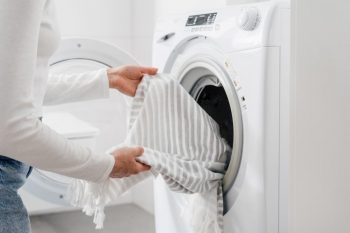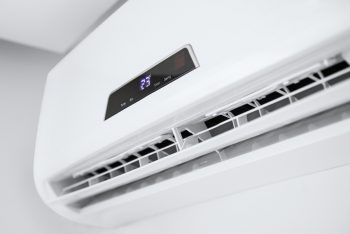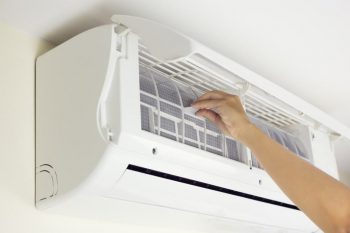
Installing a stackable washer and dryer in an RV can seem like a daunting task, but with the right information, tools, and a little patience, it can be a manageable DIY project. This comprehensive guide will walk you through the entire process, from choosing the right appliances to troubleshooting common installation issues.
Installing a stackable washer and dryer in an RV involves selecting the right appliances that fit your RV’s space and power requirements. Gather all the necessary tools and materials such as measuring tape, PEX assembly tools, drain installation materials, and electrical wiring. The installation process includes setting up the units, connecting them to the RV’s electrical and plumbing systems, and testing for functionality. Ensure safety measures are followed during installation and maintain the appliances regularly for efficient operation.
Choosing the Right Stackable Washer and Dryer for Your RV
When it comes to selecting a stackable washer and dryer for your RV, there are several factors to consider. RV-specific models like the Splendide Stackable Washer and Dryer Bundle, the LG WM3555HWA Smart All In One Washer/Dryer Combo, or the Pinnacle Stackable Washer Dryer Set 18-824N+18-860V are designed to fit into compact spaces and consume less power and water, making them ideal for RV use.
Remember to check the dimensions of the appliances and ensure they fit within the designated space in your RV. Also, consider the power requirements. RVs typically have a 12-volt DC and 120-volt AC electrical system. Ensure that the appliances you plan to install are compatible with your RV’s electrical system.
Necessary Tools and Materials for Installation
Before you start the installation, gather all the necessary tools and materials:
- Measuring tape
- Washer and dryer units
- PEX assembly tools or adapters
- Drain installation materials
- Electrical wiring and a dedicated 20-amp circuit
- Venting materials (for vented dryers)
- Stacking kit or mounting hardware
Preliminary Steps Before Installation
Before you start the actual installation process, take the following preliminary steps:
- Check for pre-plumbing and wiring: Newer RVs may come pre-plumbed and wired for washer and dryer units. If your RV is not pre-plumbed, you will need to make modifications to accommodate the appliances.
- Ensure necessary accessories are included: Make sure the washer and dryer come with all the necessary accessories for installation, such as vent covers and drain pans.
- Consider weight, dimensions, and electrical requirements: Ensure your RV can accommodate the weight, dimensions, and electrical requirements of the washer and dryer units.
- Find a suitable location: Most RV washer and dryers, especially stackable units, are installed in a closet. Make sure you have a suitable location with enough space for the appliances.
- Check power requirements: Most RV washers and dryers run on 15 amps. Ensure your RV’s electrical system can handle the additional load.
- Plan for water and drainage: If your RV is not pre-plumbed, you will need to plan for water supply and drainage.
Installation Process
Once you have taken the preliminary steps, you can proceed with the installation process. Follow these steps:
- Set up the washer and dryer in the designated area.
- Connect the washer and dryer to the RV’s electrical system.
- Connect the washer to the RV’s plumbing system.
- Connect the washer’s drain hose to the RV’s gray water tank or directly to an outlet.
- If required, install a vent for the dryer according to the manufacturer’s instructions.
- Test the washer and dryer to ensure they are functioning correctly and that there are no leaks or electrical issues.
Safety Measures During Installation
Safety should always be a priority during the installation process. Here are some safety measures to consider:
- Always read the manual or instructions that come with the equipment.
- Use appropriate personal protective equipment (PPE), such as safety goggles, earplugs, and gloves.
- Ensure that the power is off before starting any electrical work.
- Follow the steps and procedures outlined in the manual when installing the equipment.
Maintenance of Washer and Dryer
Regular maintenance of your washer and dryer can ensure their efficient operation and longevity. This includes cleaning lint traps and filters, inspecting hoses and connections, cleaning and deodorizing the washing machine, and wiping down the machines.
Troubleshooting Common Installation Issues
If you encounter any issues during the installation, don’t panic. Most common installation issues can be resolved with a little troubleshooting. This may involve checking the installation guide, verifying system compatibility, inspecting hardware connections, checking available disk space, monitoring network connections, running a troubleshooter, verifying user rights, and documenting the solution.
Installing a stackable washer and dryer in your RV can seem like a daunting task, but with the right information and a little patience, you can make it a manageable DIY project. This comprehensive guide has provided all the information you need to tackle this project with confidence. Happy RVing!
Frequently Asked Questions
What if my RV is not pre-plumbed for a washer and dryer?
If your RV is not pre-plumbed, you may need to hire a professional to make the necessary modifications. This involves adding a water supply line and a drain line for the washer. It’s a complex task that requires knowledge of plumbing and the structure of your RV, so it’s best done by an expert.
Can I use any stackable washer and dryer in my RV?
Not all stackable washer and dryers are suitable for RVs. You need to consider factors like size, power, and water consumption. Some models are specifically designed for RVs. Always check the product specifications to ensure it will fit in your RV and can operate on your RV’s power system.
Do I need a vent for my dryer?
It depends on the type of dryer you have. Some dryers are ventless, but others require a vent to expel heat and moisture. If your dryer requires a vent, you’ll need to install one according to the manufacturer’s instructions.
How often should I maintain my washer and dryer?
It’s recommended to clean and inspect your washer and dryer regularly to ensure efficient operation. Cleaning lint traps and filters after each use, inspecting hoses and connections every few months, and running a cleaning cycle on your washer every month can help prolong the life of your appliances.
What can I do if my washer or dryer isn’t working after installation?
If your appliances aren’t working after installation, first check the power and water connections. If these are fine, refer to the troubleshooting section of your appliance’s manual. If you still can’t resolve the issue, contact a professional or the manufacturer’s customer service for assistance.












